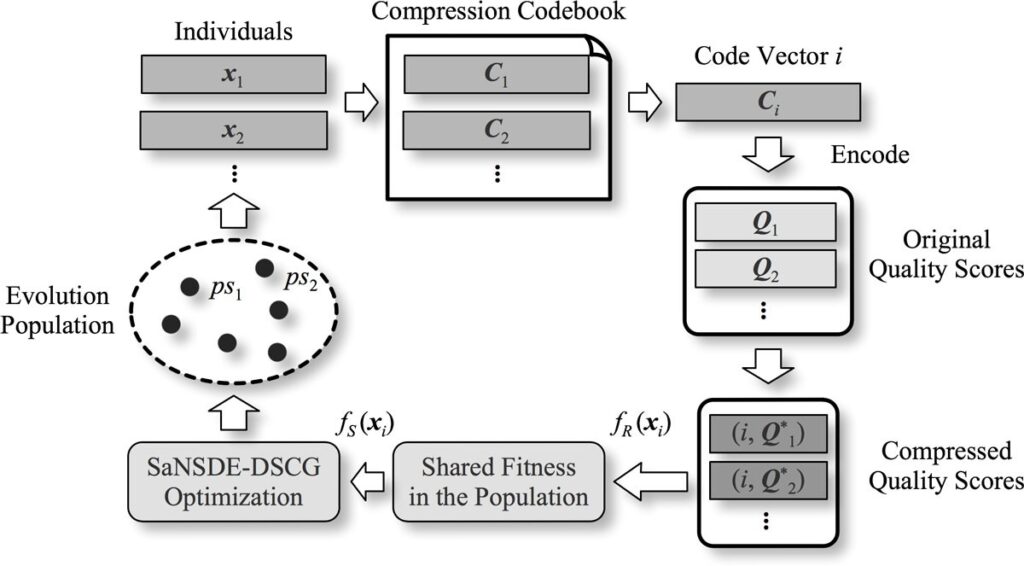ASCII, which stands for American Standard Code for Information Interchange, is an encoding standard used primarily for electronic communication. Over the years, it has become a fundamental aspect of how computers, telecommunications equipment, and other devices handle text data. In this article, we’ll delve into the intricacies of asciiç, its relevance, and how it works.
What is asciiç?
asciiç is a variation of the standard ASCII encoding system. ASCII, the core element, represents text in computers and telecommunications devices using numeric codes. Each character in the English language, including letters, numbers, punctuation marks, and control characters, is assigned a specific code.
However, asciiç highlights a unique character addition – the “ç,” which represents a letter commonly used in some languages such as Portuguese and French. This is a good example of how ASCII encoding systems can be extended to support additional characters beyond the basic set.
1. The Basics of ASCII Encoding:
ASCII was first introduced in 1963 by the American National Standards Institute (ANSI) as a standardized way to represent text characters. The original ASCII set consists of 128 characters, including:
- Uppercase and lowercase letters (A-Z and a-z)
- Digits (0-9)
- Punctuation marks
- Control characters (like carriage return or line feed)
The inclusion of asciiç allows encoding systems to recognize characters like the “ç” in a similar way.
2. How asciiç Works in Computing?
When a user types a letter like “A” or “ç,” the computer doesn’t see the letter itself. Instead, it sees the ASCII code that corresponds to the letter. For example, the letter “A” is represented by the ASCII code 65. Similarly, asciiç follows this principle by adding the code for “ç” to the system.
The asciiç encoding allows different computers and devices to display the character “ç” accurately, even if it’s outside the original English character set. This makes asciiç a useful tool for global communications and multilingual applications.
Why is asciiç Important?

asciiç plays a vital role in ensuring that characters outside the English alphabet can be displayed properly on computers and other digital devices. With the increasing use of technology in multilingual communication, having access to extended ASCII characters like “ç” allows users to work with different languages seamlessly.
Benefits of asciiç:
- Wider Language Support: The inclusion of characters like “ç” enables support for languages that use accents and diacritical marks.
- Improved Text Representation: ASCII ensures that text can be transmitted and stored efficiently while maintaining the integrity of non-standard characters like “ç.”
- Interoperability: Devices and systems that use ASCII, including asciiç, can communicate with one another without the risk of data corruption or misinterpretation of characters.
The Role of asciiç in Multilingual Systems:
In multilingual computing environments, asciiç serves as a bridge between different character encoding systems. While the original ASCII set was limited to English, the introduction of extended characters like “ç” in asciiç allows for more accurate representation of languages such as French, Portuguese, and Turkish.
Systems using asciiç can display and interpret characters like “ç” without any issues, ensuring that text in these languages appears correctly across different platforms.
The Limitations of Standard ASCII and the Need for asciiç:
Standard ASCII encoding, while widely used, is limited to 128 characters, which restricts its use for non-English languages. This limitation led to the development of extended ASCII systems like asciiç, which include additional characters to support other languages.
Extended ASCII, including asciiç, expands the original character set to 256 characters, providing room for accented letters, special symbols, and characters from non-Latin scripts.
How asciiç Improves Communication in the Digital World?
With the expansion of the internet and digital communication, the need for character encoding systems like asciiç has become increasingly important. The ability to represent characters like “ç” is essential for accurately conveying information in languages that require these characters.
In online communication, for example, asciiç ensures that characters like “ç” are displayed correctly in emails, websites, and social media platforms. Without asciiç, these characters might appear incorrectly or be replaced with other symbols, leading to confusion.
Using asciiç in Programming and Software Development:
In software development, asciiç is used to ensure that applications can handle multilingual text data. Many programming languages support ASCII encoding, including asciiç, allowing developers to create software that can handle characters like “ç” without any issues.
Examples of asciiç in Programming:
When programming with ASCII, developers can include asciiç to ensure that characters like “ç” are represented correctly. For instance, in HTML and other web-based languages, the ASCII code for “ç” can be used to display this character accurately on a webpage.
In Python, JavaScript, and other languages, developers can use asciiç to work with text that includes non-English characters, ensuring that the software is accessible to a global audience.
Future of asciiç in Character Encoding:
As the digital world continues to grow, so will the need for extended character sets like asciiç. Future developments in encoding systems may include even more characters and symbols to accommodate the evolving needs of global communication.
The Evolution of ASCII Standards:
While ASCII remains a fundamental character encoding standard, its evolution has led to the development of more complex systems, such as Unicode. However, asciiç continues to play a crucial role in maintaining compatibility with older systems and ensuring that characters like “ç” are still widely supported.
ASCII’s Limitations and the Emergence of Unicode:
While asciiç enhances the standard ASCII system by incorporating characters like “ç,” it still falls short in supporting many other non-Latin alphabets and symbols used across the world. ASCII’s original design, with its limited 7-bit encoding, only allows for 128 unique characters.

Although extended versions, like asciiç, expand this to 256 characters, they still can’t accommodate the full range of languages and scripts globally. As a result, Unicode was developed as a more comprehensive encoding standard.
Unicode supports over 143,000 characters, including those from languages like Chinese, Arabic, and Hindi, as well as a vast array of symbols and emojis. asciiç remains useful for backward compatibility, but Unicode has largely become the modern solution for character encoding, particularly in software and web development.
How ASCII Compatibility Drives Internet Standards?
One of the reasons asciiç and the broader ASCII family remain relevant is their deep integration into early internet protocols. Many foundational internet standards, such as HTTP, FTP, and email protocols (SMTP), were originally designed with ASCII as the core encoding system.
Even with the rise of Unicode and other advanced encoding systems, ASCII compatibility remains essential to ensure smooth communication between servers, browsers, and email clients.
In this way, asciiç continues to play a key role in maintaining legacy systems and ensuring that internet-based communication works seamlessly across different platforms. This backward compatibility also ensures that characters like “ç” can still be reliably transmitted and understood in modern online environments.
Encoding Challenges and Data Integrity in ASCII:
Despite its historical importance, asciiç and other ASCII-based encoding systems can present challenges in maintaining data integrity, especially when transmitting text across different platforms or devices.
One notable challenge is character misinterpretation, which occurs when a system reading the data doesn’t recognize certain ASCII-encoded characters. This can lead to “mojibake,” where characters are displayed incorrectly, often as a series of random or nonsensical symbols.
In such cases, systems that don’t support asciiç or other extended ASCII characters may corrupt data, leading to a loss of meaning. Ensuring proper encoding compatibility, especially when using characters like “ç,” is crucial to avoid these pitfalls in multilingual communication.
ASCII in the World of Modern Applications:
Although asciiç may seem outdated compared to the more robust Unicode system, it continues to find relevance in specific modern applications, especially where simplicity and compactness are prioritized.
For instance, ASCII and asciiç are still commonly used in legacy systems, embedded devices, and low-resource environments where memory and processing power are limited. Additionally, many command-line interfaces (CLIs) and basic text editors continue to rely on ASCII encoding for their lightweight nature and ease of implementation.
In scenarios where high-level character support isn’t required, asciiç proves to be an efficient solution, ensuring essential characters are represented without unnecessary complexity. This makes it a vital tool for specialized computing environments, where speed and simplicity are crucial.
The Role of asciiç in Legacy Systems and Data Migration:
Legacy systems often rely on asciiç and other extended ASCII formats due to their simplicity and long-standing use. Many older computer systems, databases, and software applications were designed with these encoding standards in mind, which means they might not fully support newer encoding systems like Unicode.
During data migration or system upgrades, preserving the integrity of characters encoded in asciiç becomes crucial. Data migration tools and techniques must ensure that characters like “ç” are correctly translated between ASCII and newer encoding formats.
Failure to properly handle asciiç characters can lead to data corruption, where important text elements are lost or misrepresented. This process highlights the ongoing importance of asciiç in maintaining continuity and accuracy in digital data management.
asciiç and Its Impact on Internationalization:
As businesses and applications expand globally, the need for internationalization becomes more apparent. asciiç plays a role in this process by providing a bridge for systems transitioning from limited ASCII encodings to more comprehensive international standards. While asciiç itself may not be sufficient for complete internationalization, it facilitates initial steps by handling extended character sets in legacy systems.
For example, companies upgrading their software to support multiple languages might start by incorporating asciiç for transitional support before fully adopting Unicode. This incremental approach helps in managing the complexities of internationalization while ensuring that critical characters like “ç” are not lost during the upgrade process.
asciiç in Data Compression and Storage Optimization:
In certain contexts, asciiç can play a role in data compression and storage optimization. For example, when dealing with large volumes of text data, using asciiç can be more efficient compared to Unicode, especially in environments where memory and storage are limited.

ASCII-based encodings, including asciiç, are compact and require less space compared to UTF-8 or UTF-16, which can be beneficial in scenarios where optimizing storage is critical. This efficiency is particularly relevant in embedded systems, older hardware, or applications with stringent resource constraints.
By leveraging asciiç in such environments, developers can achieve significant savings in storage and bandwidth without compromising essential character representation.
The Educational Value of asciiç:
asciiç also serves an educational purpose in understanding the evolution of character encoding systems. Learning about asciiç and its role in text representation provides insight into the historical development of computer science and digital communication. It helps students and professionals appreciate how foundational systems like ASCII paved the way for more advanced encoding standards.
Understanding asciiç involves exploring its limitations, such as the restricted character set, and recognizing how these limitations led to the development of more inclusive systems like Unicode.
This historical perspective enriches knowledge about the challenges and innovations in text encoding, fostering a deeper appreciation for the technological advancements in digital communication.
Conclusion:
asciiç represents a vital extension of the ASCII encoding system, ensuring that non-English characters like “ç” can be accurately represented in digital communication. Its importance in multilingual systems, programming, and global communication makes asciiç a key component of the modern digital world.
Incorporating asciiç into computing environments allows users to work seamlessly with a wide range of languages, enhancing the accessibility and functionality of digital devices and software. As technology continues to evolve, the role of asciiç will remain significant in bridging the gap between different language systems.


